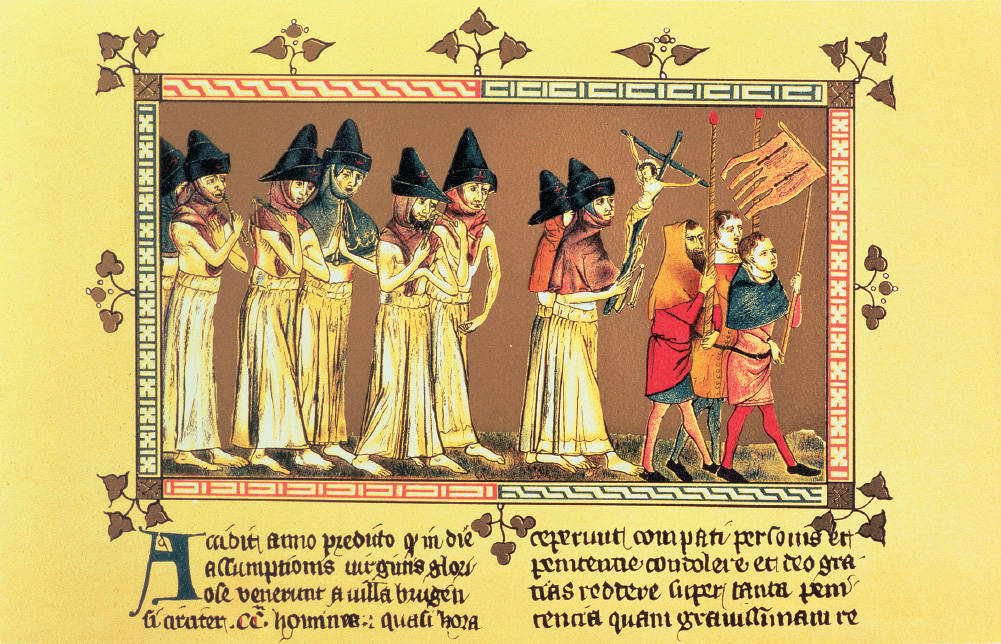Visual Source 11.1
The Flagellants
The most well-known movement reflecting an understanding of the plague as God’s judgment on a sinful world was that of the flagellants, whose name derived from the Latin word flagella, “whips.” The practice of flagellation, whipping oneself or allowing oneself to be whipped, had a long tradition within the Christian world and elsewhere as well. Flagellation served as a penance for sin and as a means of identifying with Christ, who was himself whipped prior to his crucifixion. It reemerged as a fairly widespread practice, especially in Germany, between 1348 and 1350 in response to the initial outbreak of the plague. Its adherents believed that perhaps the terrible wrath of God could be averted by performing this extraordinary act of atonement or penance. Groups of flagellants moved from city to city, where they called for repentance, confessed their sins, sang hymns, and participated in ritual dances, which climaxed in whipping themselves with knotted cords sometimes embedded with iron points. Visual Source 11.1 is a contemporary representation of the flagellants in the town of Doornik in the Netherlands in 1349.The text at the bottom reads in part:
In [1349] it came to pass that on the day of the Assumption of the Blessed Virgin (Aug. 15) some 200 persons came here from Bruges about noon. . . . [I]mmediately the whole town was filled with curiosity as to why these folk had come. . . . Meantime the folk from Bruges prepared to perform their ceremonies which they called “penance.” The inhabitants of both sexes, who had never before seen any such thing, began to imitate the actions of the strangers, to torment themselves also by the penitential exercises and to thank God for this means of penance which seemed to them most effectual.

Question
Flagellation was but one form of penance. What other forms of self-inflicted punishment for sin are suggested in the image?
Question
What is the significance of the Christ on the cross that precedes the flagellants?
Question
Does the procession seem spontaneous or organized? Do Church authorities appear to have instigated or approved this procession?
Question
How might the flagellants have understood their own actions?
Question
Why do you think Church authorities generally opposed the flagellant movement?